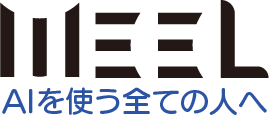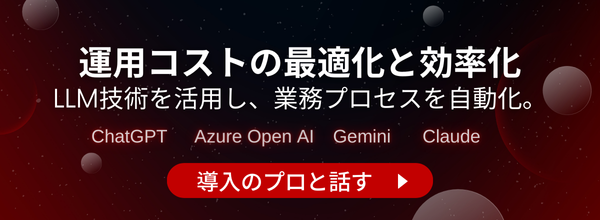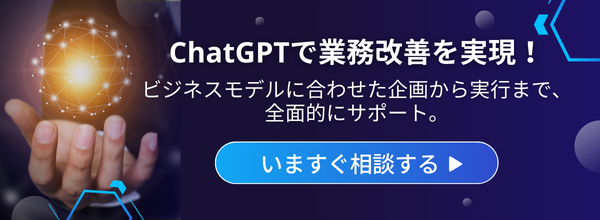Geminiとは?最新モデルの特徴や使い方、ChatGPTとの違い、料金プランを徹底解説!
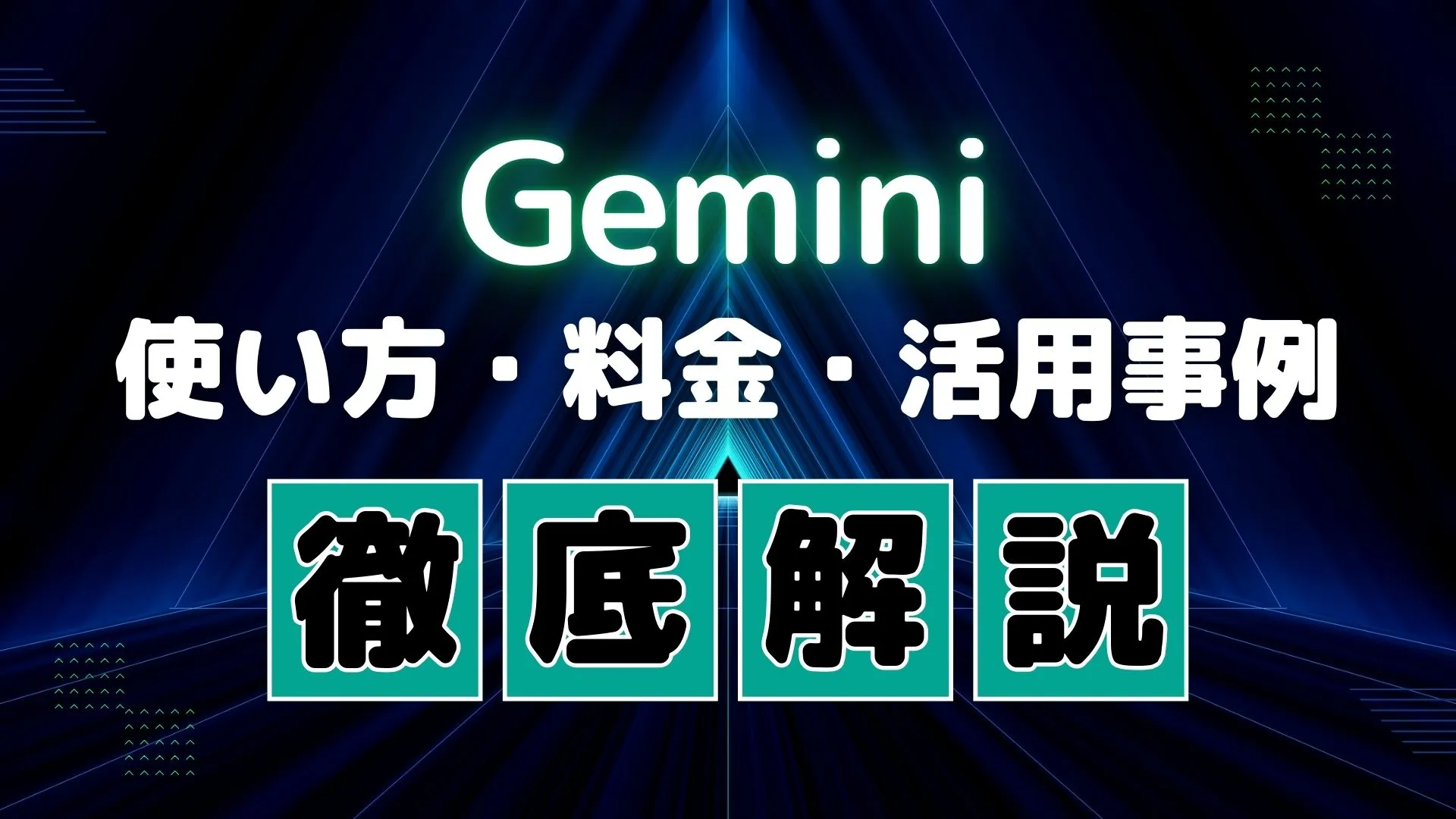
皆さんはGoogleの「Gemini(ジェミニ)」を使ったことがありますか?
Geminiはもともと「Bard」という名称のAIチャットサービスで、ChatGPTの対抗馬として開発されました。
2023年12月には搭載モデルが「Gemini Pro」へとアップデート。そして2024年2月、名前がGeminiに変わり、課金をするとGemini Advancedが使えるようになりました。
テキストでのやり取りやコード生成はもちろん、画像認識や拡張機能によるGoogleアプリとの連携までできるんです!しかも誰でも無料で使えます。
今回は、Geminiの概要や使い方、実際の活用事例、各モデルの違いなどを紹介します。最後までご覧いただき、ぜひお手元のデバイスでGeminiを使ってみてください!
\生成AIを活用して業務プロセスを自動化/
GoogleのAIモデルGeminiとは
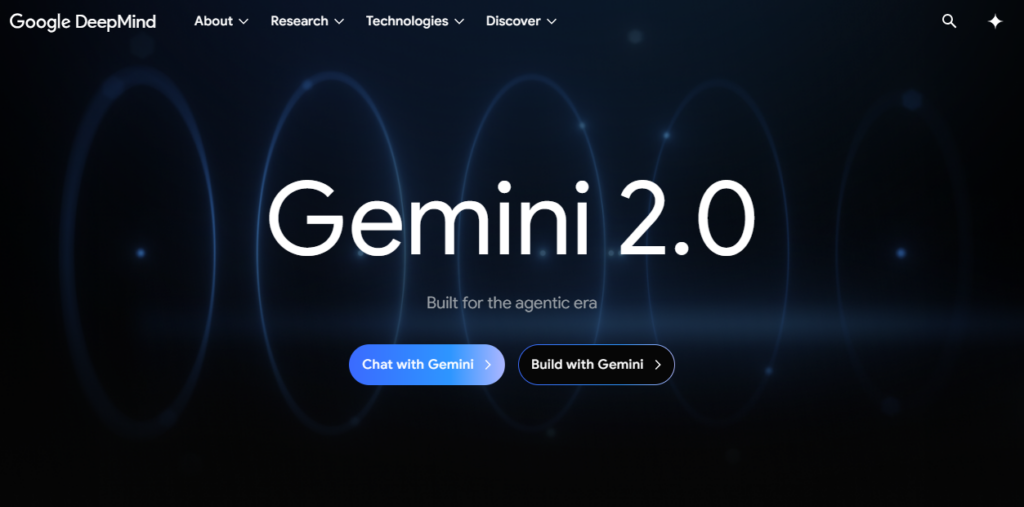
2023年12月、GoogleはChatGPTと似た性能を持つ最新版マルチモーダル生成AI「Gemini」をリリースしました。日本語での読み方は「ジェミニ」です。
もともとGeminiは対話型の生成AIである「Bard」に搭載されていたAIでしたが、2024年2月にBardはGeminiとして統合されました。
ここでは、この新しくなったGeminiの基本を解説します。
Geminiの概要
GeminiはChatGPTの対抗馬として位置付けられており、単なる検索エンジンから対話型の新たな情報収集ツールへと進化していくGoogleのあり方を体現しています。
2023年12月のリリースでは、高性能な「Gemini 1.0 Ultra」、汎用的な「Gemini 1.0 Pro」、スマトフォンなどのデバイス上で効率的処理を行う「Gemini 1.0 nano」の3つのモデルが提供されました。
2024年2月には幅広い推論タスクに最適化された中規模モデル「Gemini 1.5 Pro」が発表されています。
Gemini 1.5 Proは、入力可能なトークンが最長209万程度、出力が8,100程度です。最大2,000ページのドキュメントを理解したり、200件の電子メールを要約したりできます。
Googleは2025年1月、新たに「Gemini 2.0 Flash」がWebとモバイルアプリで利用可能になったと発表しました。※1 以前は有料版で提供されていましたが、2025年2月現在無料で利用可能です。
Gemini 2.0 Flashは応答速度が高速になり、アイデアが欲しい時のブレインストーミングや学習、文章作成などの日々のあらゆるタスクに役立ちます。
なお、Gemini2.0について詳しく知りたい方は、下記の記事を合わせてご確認ください。
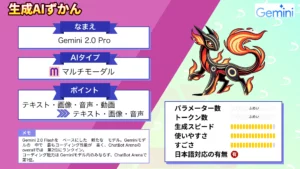
マルチモーダル生成AIとは?
マルチモーダル生成AIとは、異なるタイプのデータ(テキスト、画像、音声など)を理解し、それらを組み合わせて処理する能力を持つ生成AIのことです。
マルチモーダル大規模言語モデル(MLLM)とも呼ばれます。
マルチモーダル生成AIの登場によって、テキストだけでなく画像や音声も入力できるようになり、さらに生成AIの利便性が向上しました。
Geminiにも最新のマルチモーダル生成AIが搭載されており、テキスト・画像・動画・音声・PDFなど複数のデータを同時に処理することが可能です。
Geminiの仕組み
Geminiに搭載されているマルチモーダルモデルは、従来のマルチモーダルモデルとはトレーニング方法が異なります。
従来は、テキスト・画像・音声などのモダリティごとに別々のモデルを用意してトレーニングを行い、各モデルを繋ぎ合わせて1つのマルチモーダルモデルとするのが一般的です。
複数のモデルを組み合わせて作られているため、特定のタスクにおいて優れた結果を出す一方、曖昧で複雑な推論は苦手でした。
一方、Geminiのマルチモーダルモデルは正反対です。
テキスト・画像・音声など各モダリティのトレーニングを、一貫して1つのモデルがまとめてトレーニングを行います。さらに、トレーニングされたモデルにモダリティ別でファインチューニングを行います。
その結果、Geminiはどのような種類の入力においても、他のマルチモーダルモデルを上回る理解を示すことができるのです。
Geminiモデルの種類と違い
Geminiには、以下の4つのモデルがあります。
- Gemini Ultra
- Gemini Pro
- Gemini Flash
- Gemini Nano
モデルそれぞれの違いを詳しくご紹介します。
Gemini Ultra
「Gemini Ultra」は、Geminiモデルの中で高性能かつ最大規模のモデルです。
また、数学や物理学、歴史、法律、医学、倫理学など57項目のベンチマークテスト(MMLU)で、人間の専門家を上回った最初のモデルでもあります。

テキストをはじめ、画像、音声、動画、コードなどの様々な情報処理に対応しています。ほかのモデルに比べて専門性の高い分野でも高品質な出力ができるのが特徴で、ビジネスや研究、データ分析、高度なプログラミングコード生成など様々な目的で使われています。
Gemini Ultraを利用する場合は、有料プランの「Gemini Advanced」への加入が必要です。
Gemini Pro
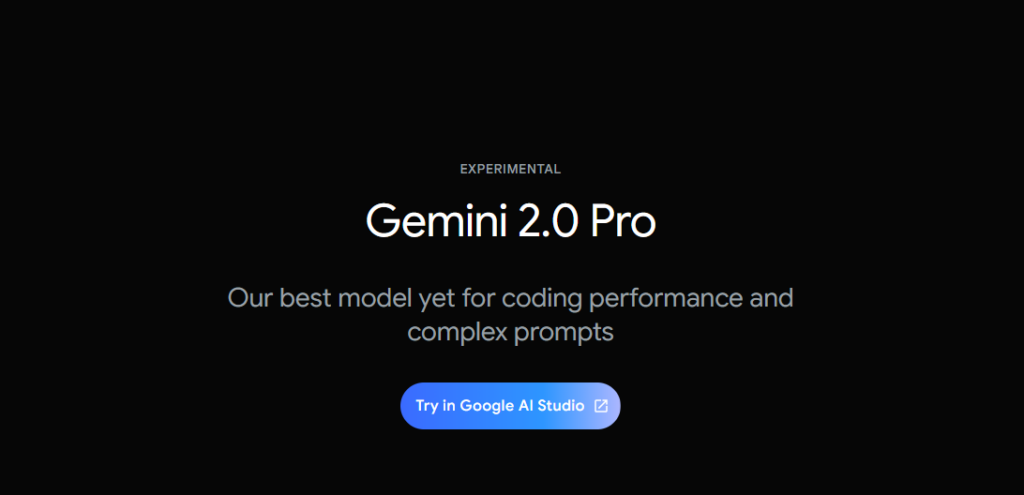
「Gemini Pro」は、幅広いタスクに対応する汎用性の高さを特徴としたモデルです。
2024年12月に「Gemini 2.0 Pro」としてバージョンアップしました。
2024年5月のアップデートで、コンテキストウィンドウが200万トークン以上に拡張しています。これは、PDFファイルなら最大3,000ページ、メールであれば200通分に相当します。膨大なデータを一度で処理できる精度の高さと、高度な推論や創造的なタスクなど、幅広い分野に利用できる汎用性を持っています。
Gemini Proを利用する場合、有料プランの「Gemini Advanced」への加入が必要です。
Gemini Flash
「Gemini Flash」は、「Gemini Pro」の軽量モデルです。
Gemini Proの性能を維持しつつ高速化を実現しており、Geminiモデルの中でも早い処理速度を持っています。
コンテキストウィンドウはGemini proの半分である100万トークンですが、データ量をセーブすることで応答速度が格段に速くなりました。また、コストはGemini Proの約1/10と、低コスト化を実現しているのも特徴です。
Gemini Flashは、Googleアカウントがあれば無料で利用できます。
Gemini Nano
「Gemini Nano」は、デバイス上のタスクに最適化したモデルです。特に、Google製スマートフォン「Google Pixel 8 Pro」での実行を想定して設計されています。
デバイス上での実行・処理を行うオンデバイスモデルであり、応答速度が速いのが特徴です。インターネットに接続せず、アプリ内で返信提案やテキスト要約などを実行できます。
Gemini Nanoは、対象のスマートフォンを所持していれば無料で利用可能です。
Geminiの特徴7つ
Geminiの特徴についてご紹介します。
競合他社の生成AIと共通する部分も多いですが、Geminiにしかない特徴ももちろんあります。ぜひ生成AIサービスを選ぶ際の参考にしてください。
Geminiの主な特徴は以下の6つです。
- 日本語の精度が高い
- 最新の情報を元にした回答が可能
- 1度の質問で3つの回答を得られる
- 拡張機能で他アプリと連携可能
- 位置情報の反映ができる
- コード生成に強い
- Chromeアドレスバーからの直接アクセスが可能
1つずつ解説していきますね。
日本語の精度が高い
Geminiの日本語の精度は非常に高く、ベンチマークのテスト結果では日本カテゴリーで高得点を出しています。
2024年5月14日のアップデート時点ではベンチマークの結果は1位だったのですが、その後の「GPT-4o」のアップデートにより、残念ながら僅差で2位となりました。

それでも、GPT-4o以外の競合他社に比べると圧倒的に高得点を出していますね。
日本語の独特なニュアンスを理解する能力が高いため、日本語話者としては頼もしい限りです!
最新の情報を元にした回答が可能
Geminiは、Google検索を通じてリアルタイムの情報にアクセスできるため、回答は常に最新の内容が反映されています。
今空いてるホテルを探す場合やリアルタイムのニュースを知りたい場合など、最新情報を求める場合にとても便利ですね。
さらに、Geminiは参考にしたWebページのURLを提示してくれるため、効率的にファクトチェックが行えます。
生成AIからハルシネーションを完全に無くすことは難しいとされていますが、Geminiであればハルシネーションは起こりにくいと言えるでしょう。Google検索内の膨大なデータを使えるGoogleが開発した生成AIならではの強みですね。
1度の質問で3つの回答を得られる
Geminiは、1度の質問に対して内容が異なる回答を3つ用意してくれます。

他の生成AIは1度の質問に対して1つの回答のみなので、Geminiの方がより最適な答えを見つけやすいように工夫されています。
他の生成AIを使うと、「もう少し違うニュアンスの回答がほしい」と思うこともありますよね。その点、初めから回答が3パターンあるGeminiなら、そのような煩わしさもありません。
拡張機能で他サービスと連携可能
Googleの拡張機能を使えば、GmailやYouTube、Google Map、Googleドライブなど、他のGoogleサービスとの連携が可能です。
入力ボックスに半角で「@」を入力すると、連携できるGoogleのサービスが表示されます。

たとえば、Gmailから特定のメールを検索してきて欲しい場合や、Googleドライブから特定のファイルを検索してきて欲しい場合など、他のアプリケーションを立ち上げなくてもGeminiだけで完結します。
普段からGoogleサービスを使っている方にとっては、それぞれのアプリケーションを立ち上げる手間を削減できる便利な機能ですね!
回答結果をエクスポートできる
Geminiは、検索内容と回答結果をGoogleスプレッドシートやGmailにエクスポートできます。
普段からこれらを利用しているユーザーにとっては非常に便利な機能ではないでしょうか。Gmailの場合は、回答内容を下書き保存をしてくれます。
下の画像のように、回答結果の共有マークをクリックすると共有方法が選択できます。

Googleを利用していない場合でも、1番上の「共有」を選択することで他者にも回答内容をリンクシェアできるので便利ですね。
位置情報の反映が可能
Geminiは位置情報を反映できるため、それを活用して色々と便利な使い方ができます。
たとえば、Geminiに行きたい場所を入力すると、位置情報を反映して目的地までの距離やルートを教えてくれて、回答から瞬時にGoogleマップで確認することもできます。
他にも、道に迷ったときにGeminiに「ここはどこ?」と尋ねると、すぐに今いる場所をマップ上で教えてくれます。そのままGoogleマップに移動して詳細を確認することもできますし、この状態から「家に帰りたい」と入力すると自宅までのルートを示してれるなど、様々な使い方ができます。
道に迷いやすい人はもちろんですが、災害時にも使える機能だと感じました。
コード生成に強い
Geminiは、コーディングやプログラミングに強く、PythonやJavaScript、Java、Goなど20以上のプログラミング言語に対応しています。
特にPythonについては、生成したコードをそのままGoogle Colabで実行・デバッグできるため、業務効率が大幅に向上します。
自然言語からコード生成もできるため、専門的な知識がなくてもウェブページやウェブサイトを作成することも可能です。
Webサイトの制作はもちろん、社内システムの構築やタスクの自動化など、ビジネスの様々なポイントで役に立つはずですよ。
なお、Geminiの活用方法について詳しく知りたい方は、下記の記事を合わせてご確認ください。

Chromeアドレスバーからの直接アクセスが可能
Googleが新たに打ち出した施策が話題を呼んでいます。2024年4月30日から、ChromeブラウザでGeminiを手軽に使えるようになったのです。世界100カ国以上で展開されたこの機能は、4月中旬にChrome Canaryでのテストを経て、満を持しての正式リリースとなりました。

使い方は驚くほど簡単。ブラウザのアドレスバーに「@gemini」と打ち込むだけで、すぐにGeminiとやり取りができるんです。この画期的な機能によって、情報検索はもちろん、翻訳や計算まで、わざわざ別のアプリを立ち上げる手間が省けるようになりました。
特に注目したいのは、Google Workspaceとの相性の良さ。Gmailの未読メールをサクッと確認したり、Google Drive内のファイルを探したり…。こうした日常的な作業が、驚くほどスムーズになるはずです。まさに、普段のオフィスワークが一変する可能性を秘めた機能と言えそうですね。
Geminiと他のGoogle AIサービスとの違い
GoogleはGeminiの他にも様々なAIサービスを提供しています。それぞれ何が違うのか詳しく解説します。
GeminiとBardの違い
「Bard」はChatGPTの対抗馬として登場し、2023年5月から日本でも使えるようになりました。
2024年2月のGemini Ultra 1.0の登場と共に、BardそのものがGeminiへと変更されたと発表されています。改名しただけで、サービス内容は同じであり、「Google Bard」と検索するとGeminiが表示されます。
Geminiとなってからの大きな変化は以下の2つです。
- 有料版「Gemini Advanced」が登場
- モバイルアプリのリリース
Google AI Gemmaとの違い
「Gemma」とは、2024年2月にリリースされた、GoogleのオープンソースAIモデルです。比較的小型の言語モデルで、Geminiのようなマルチモーダルモデル生成AIではありません。
Geminiとの最も大きな違いは、Gemmaが「オープンソースAIモデル」で誰でも無料で利用できる点です。
Geminiは「クローズドAIモデル」と呼ばれ、AIモデルが一般公開されていないため個人の開発者や企業がGeminiのAIモデルを使うことはできません。
Gemmaは英語以外の言語はあまり精度が高くないと言われていましたが、2024年10月3日に「日本語版 Gemma 2 2B」が公開されたことで、日本語でも安心して使うことが可能です。
Google Geminiの料金
2025年2月現在、GeminiはGoogleアカウントさえあれば無料で利用できます。
1日あたりの利用回数などの制限も特にありません。
また、より便利な機能を利用したい場合は「Gemini Advanced」というアップデートバージョンが選べます。
以下、GeminiとChatGPTの料金と主な機能をまとめてみました。
| Gemini(旧Bard/無料版) | Gemini Advanced | ChatGPT(無料版) | ChatGPT Plus | |
|---|---|---|---|---|
| モデル | 2.0 Flash2.0 Flash Thinking Experimental | 2.0 Flash2.0 Flash Thinking Experimental2.0 Pro Experimental1.5 Pro with Deep Research | GPT-3.GPT-4o-mini | GPT-4GPT-4oGPT-4o miniGPT-o1 |
| 入力できるデータ | テキスト画像音声 | テキスト画像音声 | テキスト画像音声 | テキスト画像音声 |
| 生成できるデータ | テキストソースコード 画像 | テキストソースコード画像 | テキストソースコード画像 | テキストソースコード画像動画 |
| 音声入力&読み上げ | ◯ | ◯ | 〇 | 〇 |
| チャットのURL共有 | ◯ | ◯ | ◯ | ◯ |
| 料金 | 無料 | 月額2,900円 | 無料 | 月額20ドル |
| 回数制限 | 15リクエスト/1分間1,500リクエスト/1日 | 360リクエスト/1分間10,000リクエスト/1日 | 60回/1分間 | 600回/1分間 |
| 学習データの鮮度 | 不明 | 不明 | 2023年12月まで | 2023年12月まで |
| Webブラウジング機能 | ◯ | ◯ | 〇(回数制限あり) | ◯ |
| 外部サービス連携 | ◯(DocsやSheetsの要約/Maps連携) | ◎(無料版+Gemini for Workspace) | × | △(要GPTs・API) |
| ファイルの読み込み | × | 〇 | 〇 | ◯ |
| 機能の拡張 | 〇 | 〇 | × | ◯ |
| AIツール作成・共有 | × | 〇(Gems) | × | ◯(GPTs) |
なお、Geminiの有料版ついて詳しく知りたい方は、下記の記事を合わせてご確認ください。
のできることまとめ!GPT-4ではできない最強活用事例10選.jpg)
Google Geminiの始め方
Google Geminiの始め方をステップバイステップで説明します。
PC・スマホ・iPadにおけるGeminiの使い方をそれぞれ紹介するので、ぜひ参考にしてみてください。
Geminiの使い方(PC版)
①Googleアカウントを作成する
まだGoogleアカウントをお持ちでない場合は、新しくアカウントを作成します。

②Google検索ページにアクセスする
PCやスマホのブラウザで、Googleの検索ページにアクセスします。

③「Gemini」と検索する
検索ページで「Gemini」と検索し、Geminiのサイトにアクセスします。

ちなみに下のリンクなら、Geminiへと直接アクセスできます!
④「ログイン」をクリックする
Geminiのトップ画面に移ると、青いボタンで「ログイン」と表示されます。これをクリックするとログイン画面に移り、利用規約が表示されるので同意して次に進みましょう。
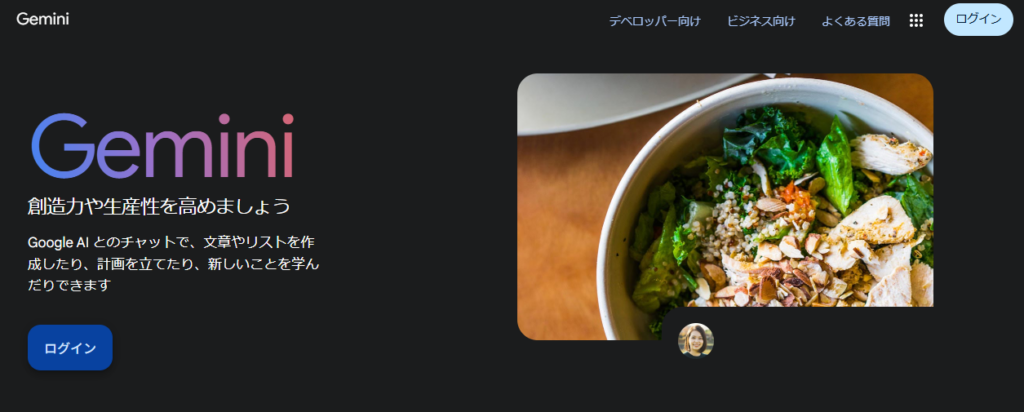
たったこれだけで、Geminiが使えるようになります。Googleアカウントを作成済みであれば、トータル1分もかかりません。
Geminiの使い方はシンプルで、検索バーにプロンプト(指示)を入力するだけです。これだけで、以下のようにAIが自動で回答を生成してくれます。

例えば「今日の東京の天気は?」「Pythonで機械学習のtutorialは?」などの質問に対して、Geminiが簡潔な回答をしてくれます。複数の質問を続けて入力することもでき、会話の流れで深い議論が可能です。
回答が不十分だと感じた場合は、「もっと詳しく教えて」「他にどのような方法があるのか」などとフォローアップの質問を投げかけることが重要です。Geminiは会話の文脈を理解し、回答をブラッシュアップしてくれます。
外出先からスマホで気軽に質問できるので、生活のあらゆる場面でGeminiの回答を活用できます。Googleアカウントさえあれば、手軽に便利なAIアシスタントを利用できるのが魅力ですね。
Geminiの使い方(スマホ版)
Geminiをスマホで使う場合、iPhoneとAndroidで立ち上げ方が異なります。
Geminiを立ち上げる際に使用するアプリは以下のとおりです。
- iPhone→Google
- Android→Googleアシスタント
実際に立ち上げるときは、以下画像の赤枠部分をタップします。

以下では、iPhoneとAndroidに分けて、それぞれの使い方を解説していきます。
iPhoneでGeminiを使う方法
①Geminiを開いて利用規約に同意する

iPhoneでGeminiを使う場合は、まずGoogleアプリを開いて上部の「Gemini」をタップすると出てくる利用規約に同意します。
②実際にプロンプトを入力する

利用規約に同意するとすぐに使えるようになるので、あとは実際にプロンプトを入力してGeminiを使ってみましょう。
AndroidでGeminiを使う方法
①GoogleアシスタントからGeminiに切り替える

GoogleアシスタントからGeminiを開くと、上記画像のような画面が表示されます。
Geminiを使う場合は、「切り替える」をタップしてください。
なお、Geminiに切り替えると、Googleアシスタントの一部機能が使えなくなるので注意してください。
②利用規約に同意する

Geminiに切り替えたあとは、利用規約への同意を求められます。
問題ない場合は「Geminiを使用」をタップしましょう。
③実際にプロンプトを入力する

ここまできたら、あとはプロンプトを入力して実際に利用するだけです。
色々な質問を投げかけてみてください。
Geminiの使い方(iPad版)

iPadでGeminiを使う場合は、iPhoneと同じくGoogleアプリを利用する方法と、PCと同じくブラウザから使用する方法の2通りがあります。
上記はブラウザから開いたものですが、検索画面で「Gemini」と検索して出てきたページを開いただけです。
PCやスマホと同じ方法で使えるようになるので、ここでは説明を割愛しますね。
Geminiでできること
Geminiでできることをざっくりまとめると、以下のとおりです。
▼Geminiでできること
- 情報収集
- 要約・翻訳
- コード生成
- 画像認識
- Imagen 2による画像生成
- Googleアプリとの連携
- Chromeアドレスバーからの利用
上記それぞれについて、筆者が実際にGeminiを使ってみた様子も交えて紹介しますね。
情報収集
Geminiは、Googleの検索エンジンと連動しているため情報収集のツールとして最適です。例えば、特定の日を指定して質問してみると、以下のように正確で詳細な回答を出力してくれます。

要約・翻訳
Geminiは、要約・翻訳ツールとしても非常に便利です。URLも読み込めるため、Webページを一切読まずに内容を把握できます。
例えば以下のように、Google Deepmindの会社案内ページのURLを貼り、「このページに書かれている内容を要約してください。」と入力すると…

以下のとおり、ページに書かれている内容をわかりやすくまとめてくれます。
▼回答
Google DeepMindは、Google傘下の人工知能(AI)研究開発企業です。2010年に設立され、英国ロンドンに本社を置いています。
Google DeepMindのミッションは、「AIの可能性を解き放ち、世界をより良くすること」です。そのために、AIの安全性と責任を重視した研究開発を行っています。
Google DeepMindの研究成果は、ゲーム、医療、材料科学、エネルギーなど、さまざまな分野で活用されています。
具体的な成果としては、次のようなものが挙げられます。
ゲーム「Go」で、人間の世界チャンピオンを破った「AlphaGo」の開発
医療画像の解析や創薬の支援を行う「AlphaFold」の開発
新材料の発見や開発を行う「AlphaFold-Mat」の開発
Google DeepMindは、AIの未来を切り拓くために、これからも研究開発を続けていきます。
以下に、ページに書かれている内容を要約したポイントをまとめます。
Google DeepMindは、Google傘下のAI研究開発企業である。
ミッションは「AIの可能性を解き放ち、世界をより良くすること」である。
AIの安全性と責任を重視した研究開発を行っている。
研究成果は、ゲーム、医療、材料科学、エネルギーなど、さまざまな分野で活用されている。若干の間違い(ハルシネーション)はあるものの、英文を一切読まずに内容を把握できるのは便利ですね!
コード生成
Geminiは、コード生成ツールとしても非常に便利です。例えば「Pythonを使用して、現在の日付と時刻を表示する簡単なスクリプトを作成してください。」と入力すると…
以下のとおり、正しく作動するコードを自動で生成してくれます。
▼回答
import datetime
now = datetime.datetime.now()
print(f"現在は、{now.year}年{now.month}月{now.day}日 {now.hour}時{now.minute}分{now.second}秒です。")また、Geminiを使って、コードのデバッグ作業を自動化することも可能です。例えば以下のコードについて、エラーの原因を尋ねてみると…
def calculate_sum(a, b):
sum = a + b
print("合計は: ", sum)
calculate_sum(5, '3')下記のとおり、エラーの原因を丁寧に説明してくれます。
▼回答
エラーの原因は、calculate_sum()関数の引数aとbの型が異なることです。aはint型、bはstr型です。int型とstr型を加算することはできません。
エラーの修正方法は、aまたはbの型を変更することです。aをstr型に変更すると、以下のように修正できます。
def calculate_sum(a, b):
sum = a + b
print("合計は: ", sum)
calculate_sum('5', '3')
この場合、aとbはどちらもstr型になります。str型同士の加算は可能です。したがって、エラーは発生しません。また、bをint型に変更してもエラーは修正できます。
def calculate_sum(a, b):
sum = a + b
print("合計は: ", sum)
calculate_sum(5, 3)
この場合、aはint型、bはint型になります。int型同士の加算は可能です。したがって、エラーは発生しません。どちらの修正方法を採用するかは、コードの目的や意図によって判断する必要があります。簡単なプログラミング業務であれば、Geminiで大幅に負担を軽減できそうですね!
画像認識
Geminiはテキストだけでなく、画像も認識できます。
▼画像のアップロード方法
入力欄の左にあるマークから画像をアップロードする

例として、『茨城県の私立高等学校等に対する就学支援策』に関する資料スライドの画像をアップロードし、「以下の資料の内容について解説してください。」と入力すると…

下記のとおり、スライドの内容をわかりやすく丁寧に解説してくれます!しかも、スライドに書かれていない補足情報もセットで。
▼回答
資料の内容は、茨城県が実施する令和5年度の私立高等学校等に対する就学支援策についてです。
支援策は、入学金軽減、就学支援金、奨学給付金の3種類があります。
入学金軽減は、私立高等学校の全日制課程、中等教育学校後期課程、高等課程、専修学校高等課程の入学金を、対象世帯の年収に応じて軽減する制度です。
就学支援金は、私立高等学校の全日制課程、中等教育学校後期課程、高等課程、専修学校高等課程の授業料を、対象世帯の年収に応じて支援する制度です。令和5年度から、家計急変世帯に対する授業料支援は、就学支援金により対応されます。
奨学給付金は、私立高等学校の全日制課程、中等教育学校後期課程、高等課程、専修学校高等課程、高等学校専攻科の授業料を、対象世帯の年収に応じて支援する制度です。
資料内の表は、各支援策の概要と、対象世帯の年収の目安を示しています。
具体的には、入学金軽減では、非課税世帯の全日制第1子は137,500円、その他の世帯の全日制は96,000円の軽減が受けられます。就学支援金では、年収約270万円未満の世帯は427,200円、年収約350万円未満の世帯は213,600円、年収約590万円未満の世帯は180,000円の支援が受けられます。奨学給付金では、年収約270万円未満の世帯は427,200円、年収約350万円未満の世帯は213,600円、年収約590万円未満の世帯は180,000円の支援が受けられます。
なお、資料内の年収の目安は、保護者のうちどちらか一方が働き、高校生1人、中学生1人の4人世帯の場合です。
資料の画像では、茨城県の私立高等学校等の平均入学金と授業料も示されています。令和4年度の平均入学金は183,000円、平均授業料は384,000円です。
これらの支援策により、私立高等学校等への進学を希望する家庭の経済的負担の軽減が図られます。Geminiの画像認識機能を活用すれば、難解なスライド資料の内容も簡単に把握できますね!
※ちなみに2024年2月時点で、人物の画像をGeminiに入力すると……

このように、検閲されてしまいます。
Imagen 3による画像生成
Geminiには、2024年8月28日よりGoogleの最新画像生成AI「Imagen 3」を搭載しています。無料版/有料版問わず日本語でも画像生成可能です。試しに、「猫の写真を生成して」とGeminiに入力してみました。

もはや本物と見間違うほどのクオリティ!毛のやわらかさや光の当たり具合などがめちゃくちゃリアルです。
ちなみにこちらは、1つ前の「Imagen 2」で生成した画像です。

こちらもかなりリアルではありますが、見比べると「Imagen 3」のクオリティの高さがよく分かりますね!
拡張機能によるGoogleアプリとの連携
Geminiには、下記のGoogleアプリと連携できる拡張機能(旧Bard Extensions)が備わっています。
- Google Flights
- Google Hotels
- Google Maps
- Google Workspace(Gmailなど)
- YouTube
2023年12月19日より、日本語入力でも利用できるようになりました。
▼拡張機能の使い方
1. 画面右上のマークをクリック

2. 連携したいアプリを選択

例としてGoogle Hotelsと連携して、「東京駅周辺のホテルと観光地を探してください。」と入力してみます。すると、以下のようにGoogle Hotelsの情報を基に、東京駅周辺のホテルと観光地をリンク付きで紹介してくれます。

さらに、Google Mapsとも連携しているのでホテルまでの道順も教えてくれます。
「東京駅から「京王プレッソイン 東京駅八重洲」までの道順を教えてください。」と入力してみます。すると、Google Mapsを基に回答してくれます。

そのうえ、YouTubeとも連携していますので目的地周辺を紹介している動画も検索してくれます。
「東京の見どころを紹介した動画はありますか?」と質問すると次のような回答をしてくれました。

これすごくないですか⁉
普段Googleアプリを利用している方であれば、拡張機能を活用することで作業量を大幅に削減できますよ!
Chromeアドレスバーからの利用
Googleが2024年4月から提供を開始した新機能で、Chromeブラウザのアドレスバーから直接Geminiを利用できるようになりました。これまでは別タブでGeminiを開く必要がありましたが、この機能によってブラウザ上での作業を中断することなく、スムーズにAIアシスタントを活用できます。
使い方としては、まずChromeブラウザのアドレスバーをクリックし、「@gemini」と入力。

その後、TabキーまたはSpaceキーを押して、質問や指示を入力してEnterキーをクリック(今回は、「今日の天気は?と入力)。

そうすると、以下のようにGeminiの画面に切り替わり、今日の天気を教えてくれます。

とても便利ですね!
GeminiがChatGPTより優れている9つの機能
Geminiは部分的に、ChatGPTよりも優れています。ChatGPTに勝るGeminiの機能は以下の8つです。
- 最新情報の参照
Geminiはリアルタイムの情報に基づいて正確な回答が可能です。 - Webサイトの要約
Geminiは、サイトのURLを貼り付けるだけで内容を勝手に要約してくれます。
無料版ChatGPTを使うときにやっていた、Webページの中身のコピー&ペーストはもう必要ありません。 - 音声検索
Geminiでは、音声入力で検索することができます。ChatGPTでも音声入力は可能ですが、モバイルアプリ版限定です。Geminiではテキストフィールドのマイクボタンをクリックして、素早く音声プロンプトを入力することができます。 - 出力のエクスポート
Geminiは2クリックで出力をエクスポートし、GmailやGoogleドキュメントに瞬時に送信できます。 - 位置情報の反映
Geminiに位置情報へのアクセスを許可すると、それに応じて回答を調整してくれます。例えば、Geminiにある商品のリンクを求めると、Geminiは質問者の国の店舗へのリンクを回答します。 - Google検索
GeminiはGoogle検索を行い、ある程度正確な情報を提供します。また、その情報のソースも提示してくれるため、自分で調べる手間が省けます。 - 1度に3つの回答を提示
他のAIチャットボットとは異なり、Geminiは1度の質問に対して3つの回答を提示してくれます。何度も回答をブラッシュアップする必要がないのは大変便利です。 - プラグインアクセス
Geminiには、多数の有用なプラグインにアクセスできる機能があります。Spotify、Indeed、Adobe Fireflyなど、さまざまなアプリケーションに瞬時にアクセスできます。 - Google独自の得意分野
Geminiは、Google独自のAIプログラム「AlphaGo」による強化学習(状況に応じた適切な行動を選択するように訓練する手法)を行っており、ChatGPTをはじめとした他の大規模言語モデルが苦手とする戦略立案や問題解決を得意としています。
なお、最新のGeminiとChatGPTの日本語性能の比較について詳しく知りたい方は、下記の記事を合わせてご確認ください。
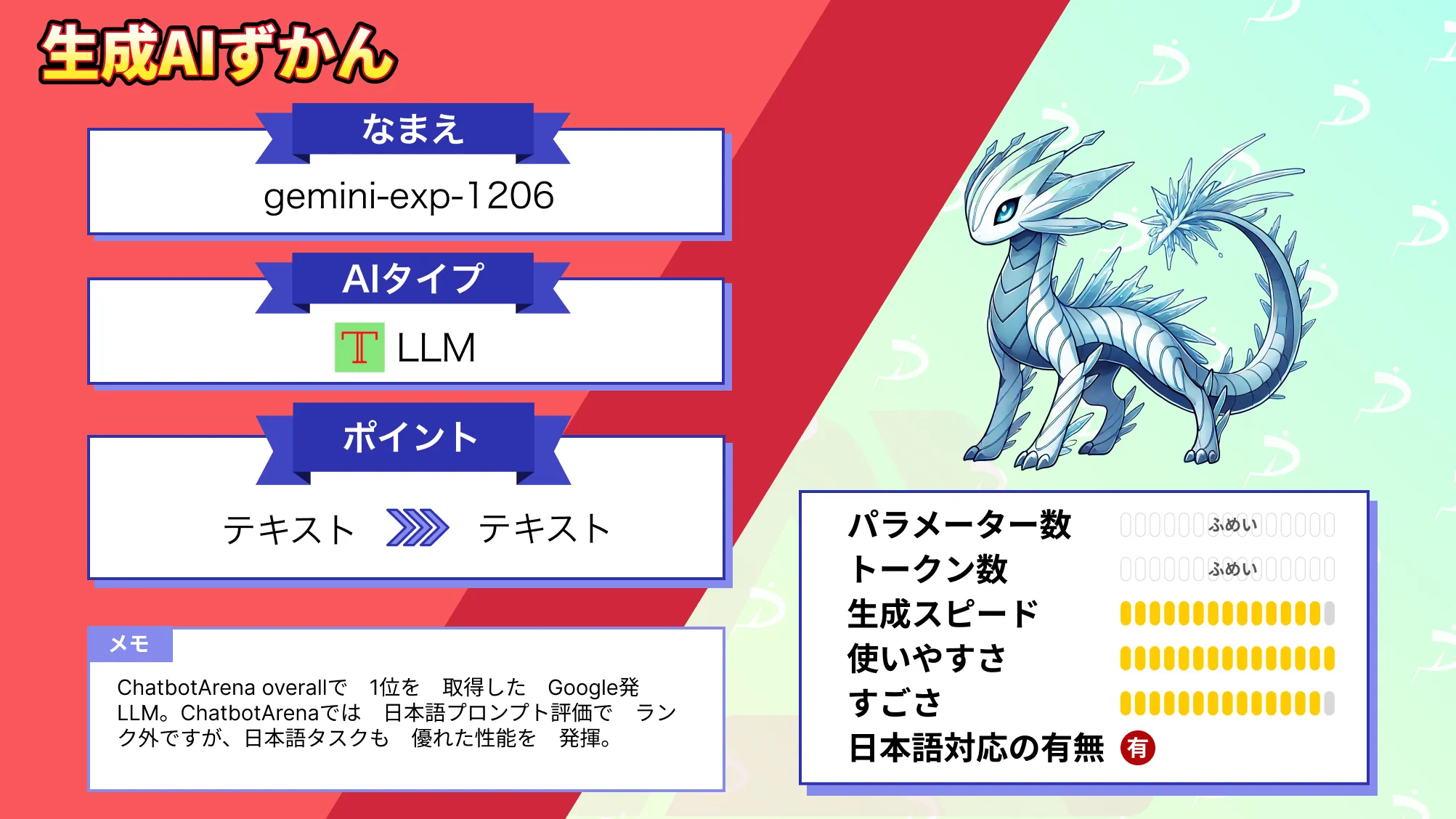
Geminiの活用事例12選
Geminiは、多くの業務を効率化できるAIツールです。単純に文章を作成するだけでなく、プログラミングのコード作成や商品画像からキャッチコピーを作成することも可能です。
ここでは、Geminiの活用事例をご紹介するので、使えそうなものがあったら試してみてくださいね!
【画期的!】GeminiがGmailと連携!
Googleが提供しているサービスと連携できることも、Geminiの魅力の1つです。Geminiを使えば、メールの返信内容を瞬時に生成し、そのままGmailの下書きに保存できます。時間がないときでも、Geminiがクオリティの高いメールを作成してくれます。
特に便利なのは、メールの文脈を理解した返信文の生成です。取引先との過去のやり取りや添付ファイルの内容まで考慮して、適切な返信文を作成してくれます。また、複数の返信案から選べるため、状況に応じた最適な文面を選択できます。これでメール作成のストレスから解放されますね!
【AI比較表】Geminiが自身とChatGPT・BingAIとを一挙比較!
Geminiなら比較表の作成も容易にこなせます。さらには、その比較表をワンクリックでGoogleドキュメントに転送もできてしまうという、大変便利な機能です!
比較表には各AIの特徴だけでなく、実際の応答速度や精度についても詳細なデータが含まれます。また、特定の業務や目的に応じて、どのAIが最適かの提案まで行ってくれるため、用途に合わせた選択が容易になります。
【AIプログラミング】Geminiがコード生成で新境地を開く!
Geminiはコード生成にも優れています。なんとWikipediaのAI関連情報をスクレーピングするPythonコードを依頼したところ、一瞬で作成してくれました。そして、そのコードはGoogle ColabのNotebookに自動で書き込まれていたとのこと。生成されたコードには詳細なコメントが付与され、各行の動作説明も含まれています。また、コードの最適化提案やセキュリティ上の注意点まで指摘してくれるため、初心者でも安心して利用できますよ。プログラミングはどんどん効率化されますね!
【驚愕!】GeminiでPython画像処理アプリのモックアップ
Geminiは、コード生成機能を有していると先述しましたが、それだけではありません。Pythonの画像処理アプリのモックアップ作成を指示したところ、なんと複数の実装方法とコードを提案してくれました。
生成されたコードには詳細なコメントが付与され、各行の動作説明も含まれています。また、コードの最適化提案やセキュリティ上の注意点まで指摘してくれるため、初心者でも安心して利用できます。あとは、どのコードを使うか選ぶだけですから大変便利ですね!
【AI家庭教師】Geminiが英語学習を助ける!
英語学習の新しいパートナーとして、Geminiを活用しましょう。あなたの学習を強力にサポートする2つのプロンプトを紹介します。
1.英語の添削
文章を入力すればGeminiがそれを添削し、より良い表現を提案してくれます。しかもトーンに合わせて複数提案してくれるので、より理解が深まりますよ!
2.TOEICのような文法問題を作る
試験対策もAIにお任せ!Geminiなら英語の文法問題も自動生成してくれます。
もう参考書は必要ありません!他にも、英語学習に役立つプロンプトが紹介されているので、気になった方は確認してみてください!これからはAIのパートナーと勉強する時代ですね!
【業務活用】人事の作業が簡単に!Gemini求人作成法に革新!
Geminiを使って求人票も簡単に作成できます。プロンプトのコツを掴むだけで、求人作成が驚くほどスムーズになるでしょう。
特筆すべきは、ChatGPTと比較してGeminiの方が、より実践的で応用力のある求人原稿を作成できる点です。会社概要や応募方法、必須条件など、募集に必要な情報を自動的に補完してくれます。また、複数パターンのキャッチコピーを生成できるため、ターゲットに応じた効果的な求人広告の作成ができます。
先進的ですね!
【革新的】市場分析もGeminiで!
最新情報の取得ができるGeminiなら市場分析も可能です。株価指数や為替の値動きなど、リアルタイム情報を表にして、相場変動の理由まで教えてくれます。
さらに、業界トレンドの追跡や、製品・サービスに関連する最新のキーワードの把握にも役立ちます。市場調査や競争分析といった複雑なデータ処理タスクを支援し、定量的なデータと定性的な分析を組み合わせることで、より正確な市場動向の予測ができるのです。
これで、ニュースサイトを読み漁る必要はなくなりますね!出先で確認したいときに試してみてください。
【画像入力に対応】Geminiでのマルチモーダル体験とその実用例
Geminiは画像入力に対応しています。
このような複数入力(マルチモーダル)は、ChatGPTでは有料版の「ChatGPT Plus」でしか利用できません。これを機にGeminiで一足先に体験しましょう。画像入力ができることで、以下のようなことが実現可能になります。
- 画像内の文字の読み取りと文字起こし
- 商品写真を理解してキャッチコピーを作成
- サイト構成のラフ画をもとにフロントエンドを作成
画像ファイルを送信することで、「商品の名前」「どのように使うのか?」などの情報を文字に起こして、解説してもらうことが可能です。画像が入力できるだけで、さらにできることのバリエーションが増えそうですね!
【間違い探しに最適!】Geminiなら文章の校正・校閲も可能
Geminiに自身が作成した文章を送信すると、漢字の間違いや不適切な言い回しを指摘してもらうことが可能です。間違った情報も修正してくれるので、虚偽の情報を発信してしまうのを防げます。意味不明な指摘をされることもありますが、間違っている文章自体を見つけてくれるのは魅力的ですよね!
以下で、実際に校正を依頼した際のプロンプトを紹介します。
▼プロンプト
『次の文章を校正してください。「Google Bardはマイクロソフト社が2020年にリリースしたサービスです。現在すでに本格運用が開始されており、月額20ドルで利用できます。」』▼回答
校正した文章は次のとおりです。
Google BardはGoogle社が2023年にリリースしたサービスです。現在すでに本格運用が開始されており、無料で利用できます。
修正箇所は次のとおりです。
1行目:Google社が開発したサービスであるため、社名を「マイクロソフト」から「Google」に修正しました。
2行目:2023年にリリースされたため、「現在すでに本格運用が開始されており」と修正しました。
3行目:月額20ドルで利用できるサービスは「ChatGPT」であり、「Google Bard」は無料で利用できるサービスであるため、「月額20ドルで利用できます」を「無料で利用できます」に修正しました。
また、以下のような修正も考えられます。
1行目:リリースした時期を明確にするため、「2023年5月」と具体的な日付を記載することもできます。
2行目:本格運用が開始された時期を明確にするため、「2023年8月」と具体的な日付を記載することもできます。修正箇所や修正内容は、文章の目的や読者層に合わせて適宜調整してください。上記のように、誤った情報を箇条書き形式で指摘してもらえると非常にわかりやすいですよね。自身で校正を実施する前に、一度Geminiで校正してみると意外な発見があるかもしれません!
【ワンランク上の文字起こし】Google Pixel スマートフォンでAI機能が使える!
Googleが提供しているGoogle Pixel 8とGoogle Pixel 8aには、Gemini Nanoが搭載されています。
レコーダー アプリの要約機能を使えば、会議中の発言を文字起こしすることが可能です。さらに、発言者をラベル付けする機能まで搭載するなど、その機能はさらに便利になっています。
テキストファイルやGoogle ドキュメントにエクスポートもできるので、文字起こし後はスムーズに社内の担当者へ共有ができます。
【カスタムチャットボット作成】Gemsでオリジナルチャットボットが作れる!
2024年8月28日にGoogleから、Geminiをカスタマイズできる機能「Gems」が公開されました。
ChatGPTのGPTsと似た機能で、特定のタスクを処理することに特化した自分専用のチャットボットを作成できます。
Gems最大の特徴は、他のGoogleサービスと連携したチャットボットを簡単に作成できる点です。
たとえば、Gmailと連携して未読のメールを取得し、未読メールへの返信を生成するチャットボットや、Google Driveと連携してGoogle上で自分が扱っている情報にアクセスできるチャットボットなどが作成可能です。
ChatGPTでGoogleサービスと連携するためには複数のステップが必要になります。その点、GemsならGoogleサービスと直に連携したチャットボットを簡単に作成できるので、普段からGoogleサービスを利用している方には大変便利な機能です!
【Chrome連携】アドレスバーからGeminiを瞬時に起動!
Chromeブラウザの最新アップデートで、業務効率を劇的に向上させる革新的な機能が登場しました。
おすすめの使い方
- 会議中の即時ファクトチェック
- 外国語サイトの瞬時翻訳
- データ分析時の数式確認
この機能は、ChromeブラウザのシェアNo.1という強みを活かし、ビジネスシーンでの活用が急速に広がっています。特に、複数のツールを行き来する必要がなくなった点が、多くのユーザーから高く評価されています。
なお、Gemsについて詳しく知りたい方は、下記の記事を合わせてご確認ください。

Google Geminiを活用しよう!
今回紹介したGeminiについて、情報をまとめると下記のとおりです。
| モデル | Gemini 2.0 Flash※有料版Gemini Advancedは「2.0 Pro」「」 を搭載 |
|---|---|
| 料金 | 無料で使い放題※Gemini Advancedは月額2,900円 |
| 利用条件 | Googleアカウントがあれば誰でも利用可能 |
| 活用方法 | 情報収集・要約・翻訳・コード生成・画像認識・Googleアプリとの連携、カスタムチャットボット作成など |
Geminiはさまざまな用途で活用できる、非常に便利なAIツールです。Googleアカウントさえあれば誰でも無料で使い放題なので、興味のある方はぜひ一度お試しください!
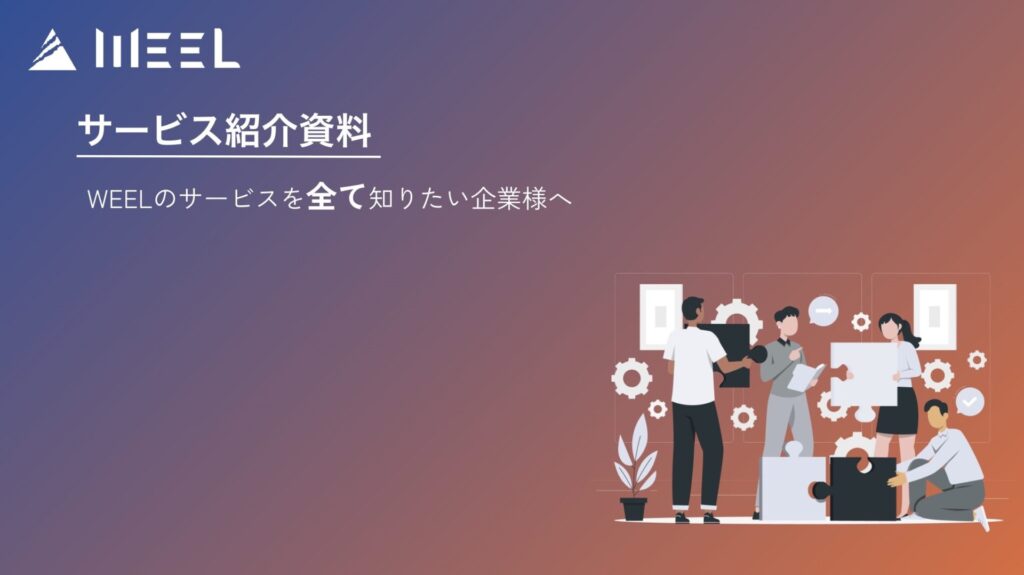
生成系AIの業務活用なら!
・生成系AIを活用したPoC開発
・生成系AIのコンサルティング
・システム間API連携
最後に
いかがだったでしょうか?
Geminiの多機能性を最大限に活かせば、効率的な業務改善が可能です。
株式会社WEELは、自社・業務特化の効果が出るAIプロダクト開発が強みです!
開発実績として、
・新規事業室での「リサーチ」「分析」「事業計画検討」を70%自動化するAIエージェント
・社内お問い合わせの1次回答を自動化するRAG型のチャットボット
・過去事例や最新情報を加味して、10秒で記事のたたき台を作成できるAIプロダクト
・お客様からのメール対応の工数を80%削減したAIメール
・サーバーやAI PCを活用したオンプレでの生成AI活用
・生徒の感情や学習状況を踏まえ、勉強をアシストするAIアシスタント
などの開発実績がございます。
生成AIを活用したプロダクト開発の支援内容は、以下のページでも詳しくご覧いただけます。
➡︎株式会社WEELのサービスを詳しく見る。
まずは、「無料相談」にてご相談を承っておりますので、ご興味がある方はぜひご連絡ください。
➡︎生成AIを使った業務効率化、生成AIツールの開発について相談をしてみる。
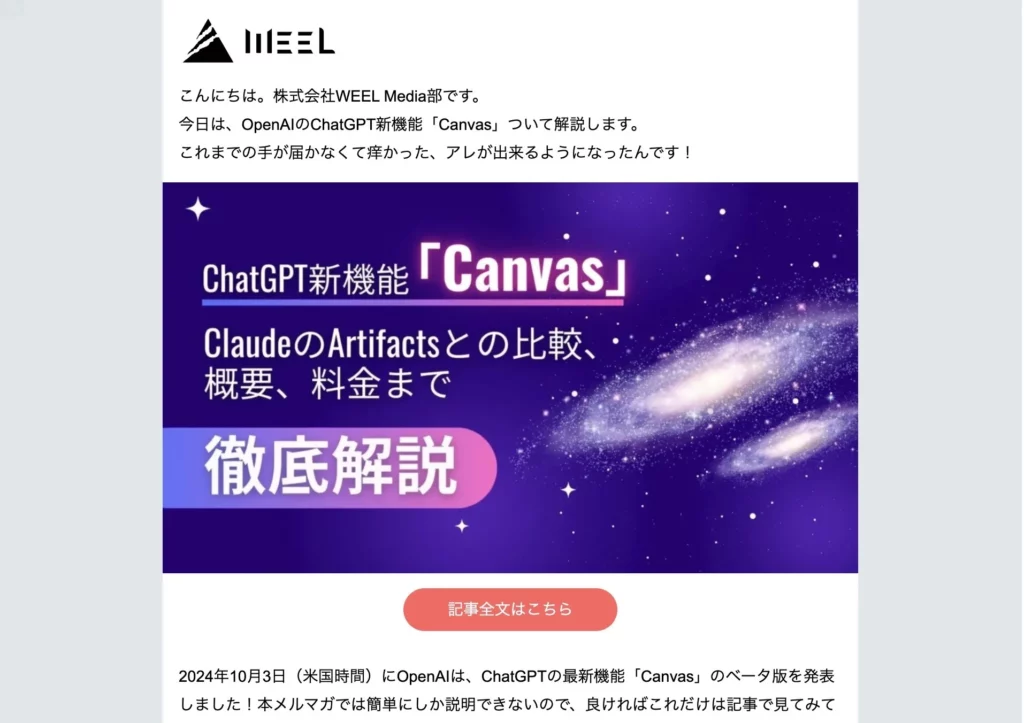
「生成AIを社内で活用したい」「生成AIの事業をやっていきたい」という方に向けて、通勤時間に読めるメルマガを配信しています。
最新のAI情報を日本最速で受け取りたい方は、以下からご登録ください。
また、弊社紹介資料もご用意しておりますので、併せてご確認ください。
